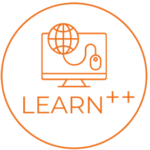How do clickers work in classroom environments?
Student clickers, instructor clickers, and receivers are integral components of a smart student response system (SRS). These systems revolutionize classroom engagement and assessment by allowing instructors to gather real-time feedback from students. Student Response Systems have revolutionized the way educators interact with students in the classroom. By leveraging the power of technology and real-time feedback, SRS enables instructors to create dynamic and engaging learning environments. In this article, we will explore how SRS works and the various features and functionalities it offers, making it an invaluable tool for creating smart classrooms.
How SRS Works?
SRS operates through a seamless integration of student clickers, instructor clickers, and receivers. Let’s understand the process step-by-step:
Student Keypads/Clickers: The student keypads play a crucial role in the SRS. They display student names and provide operating instructions for answering questions. Students can bind their keypads with the system by following the provided instructions or through double-clicking the Fn button. Clickers are handheld devices that are used by students for classroom assessments. These devices are easy to operate and can be configured with a specific RF receiver to avoid interference from neighbouring classrooms. Our student response systems are designed to be foolproof, ensuring that the assessment process runs smoothly.
Teacher-end Controller: The instructor clicker serves as the control device for managing the SRS during presentations. It enables instructors to navigate PowerPoint slides, start/end answering sessions, and establish a connection with the system by swiping on the receiver. The controller’s Life-line section displays the correct answer and offers additional options such as 50:50, Audience Poll, congratulations, or apologies based on student responses.
Receiver: The SRS setup begins by connecting the receiver to the instructor’s computer using a customized USB cable. Once connected, the receiver enters standby mode, indicated by a red LED light. The RF receiver is a crucial component of the student response system. It connects to a laptop via USB and receives data from the clickers via radio waves. The system does not require an internet or Wi-Fi connection, making it easy to set up and use in a classroom environment. The receiver also features an external dual-band antenna, which helps prevent data loss or interference.
When configuring a set of clickers with a specific RF receiver, the process is simple and user-friendly. The receiver is connected to the laptop, and the clickers are synchronized with the receiver. This ensures that the clickers are only communicating with the designated receiver and not with any other nearby receivers. The system can also be password-protected, further ensuring that the clickers only connect to the designated receiver.
SRS Module in Microsoft Office PowerPoint: With Microsoft Office PowerPoint, instructors can access the SRS module to manage devices and preset interaction details for each slide. This integration allows for smooth control and synchronization between the presentation and SRS activities.
Student and Device Management: To ensure seamless participation, the SRS provides tools for student and device management. Instructors can add or delete classes and courses, import student namelists, and bind student keypads with the system. The system allows for NFC binding or manual binding through the receiver device.
Software Presetting: The SRS software suite includes a presetting panel that allows instructors to customize settings for each quiz slide. They can choose the question type, set question numbers, configure countdown timers, specify answer options, define correct answers, assign points, and implement negative marking. The software also supports chart outputs for statistical data representation.
Advantages: The student response system is a powerful tool that enables instructors to gather immediate feedback from students during lectures or presentations. It offers several key features that enhance engagement and facilitate real-time assessment. Here is an overview of how the student response system works based on the provided text:
- Immediate Feedback: The system allows instructors to receive immediate feedback from students. By posing a question, teachers can assess if students are struggling with a particular topic or if they have a clear understanding. This instant feedback enables instructors to adapt their teaching approach on the spot, ensuring effective communication and addressing students’ needs promptly.
- Individual and Group Participation: The student response system offers both individual and group participation modes. Students can participate individually, answering questions on their personal devices, or engage in group activities, fostering collaboration and teamwork.
- Timed Quizzes and Tests: The system includes features to conduct timed quizzes and tests. Instructors can set time limits for students to answer questions, enhancing focus and creating a structured assessment environment. The system allows for automatic grading and quick display of results, providing immediate insights into student performance.
- RF Instructor Remote: The system provides an instructor remote that serves multiple purposes. It acts as a control device for managing activities, such as quizzes and tests, and displaying results promptly. Additionally, the remote includes a laser pointer for highlighting important content during presentations.
- Diverse Activity Options: The student response system offers a range of activity options to cater to different teaching needs. These activities may include normal quizzes, standard multiple-choice exams, yes/no questions, rush quizzes, voting, and inquiries. This variety allows instructors to create engaging and interactive sessions.
- Software Suite: The system is accompanied by a software suite that enhances the functionality and management of the student response system. Teachers can set up classes, create exams, design templates, manage communication, and generate reports. The software also integrates seamlessly with standard Microsoft PowerPoint features, enabling the inclusion of multimedia elements to enhance presentations.
- User-Friendly Tools: The student response system provides user-friendly tools that simplify the process for teachers. They can easily edit questions, conduct quizzes, organize games, import class lists from Excel, and generate reports compatible with Excel. These tools streamline administrative tasks and allow instructors to focus on engaging with students and assessing their understanding.
Author:
Dr R K Suresh M.E., Ph.D., F.I.E., C.I.E., P.G.D.M.M.
Founder and CEO
LPP Learning Technology Solutions Pvt. Ltd., Coimbatore-4
